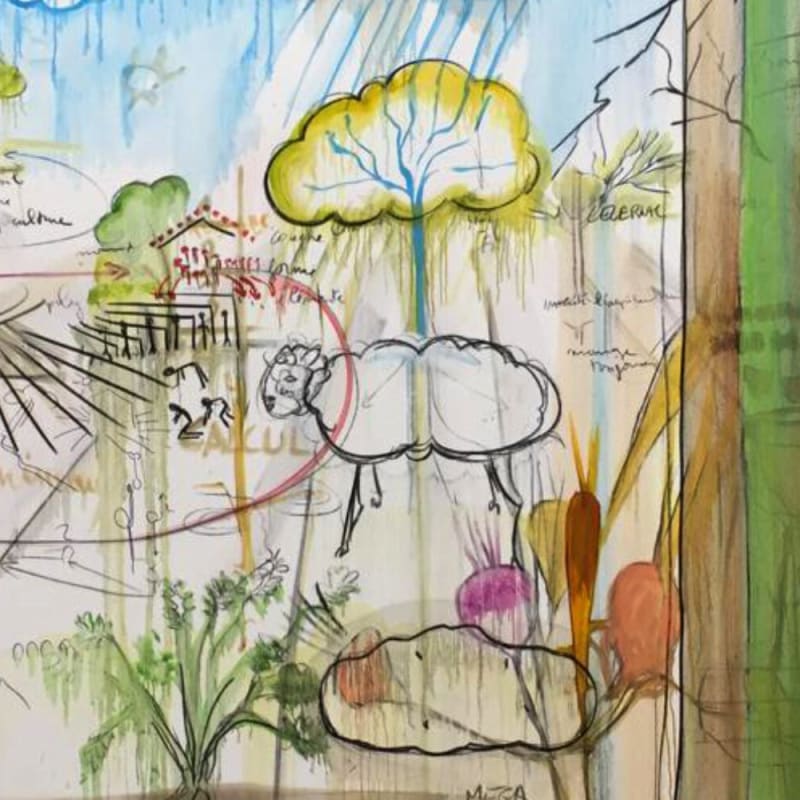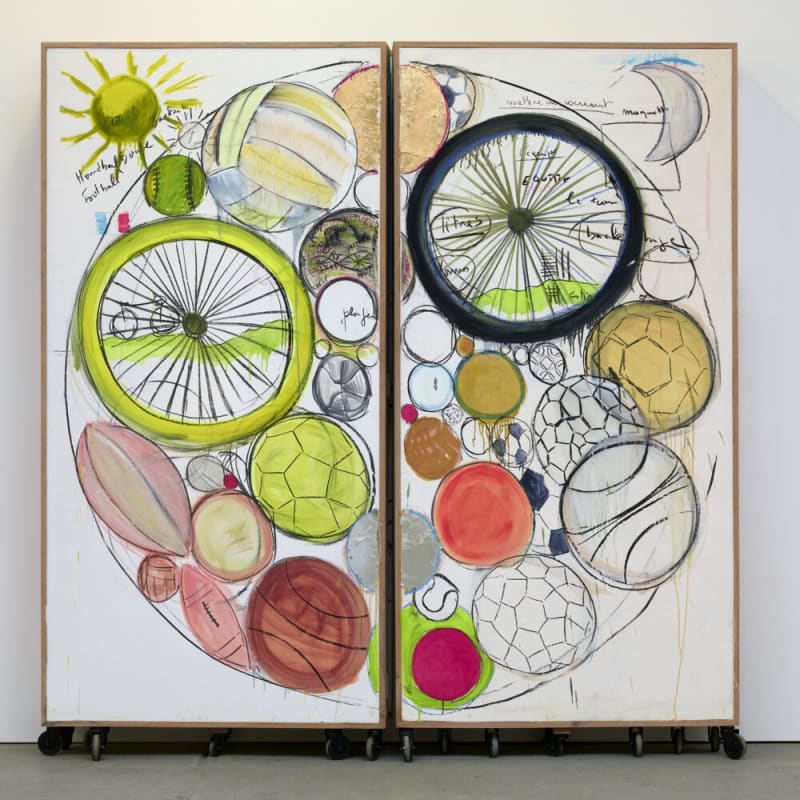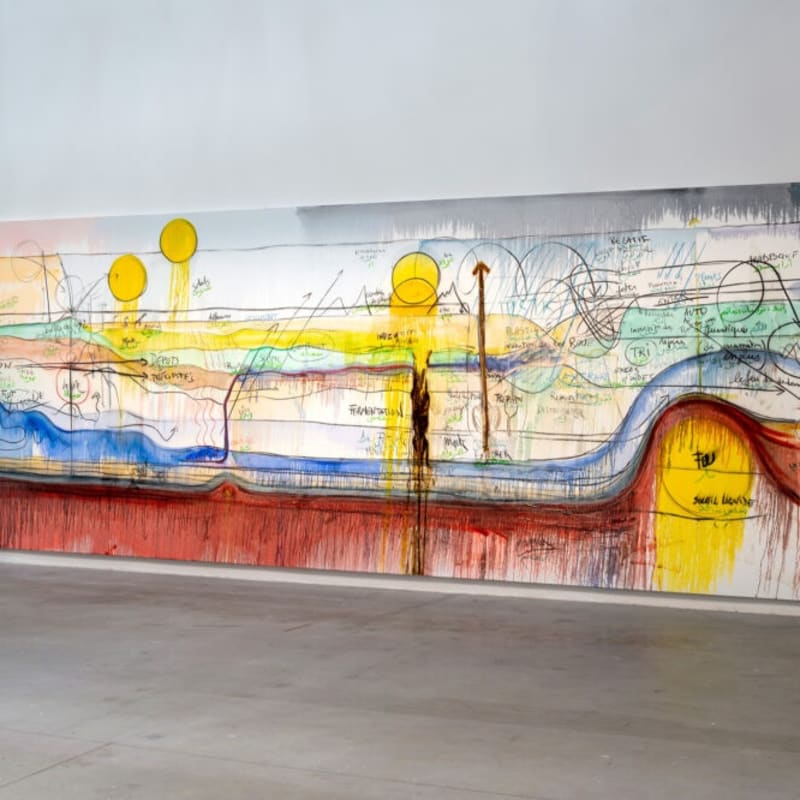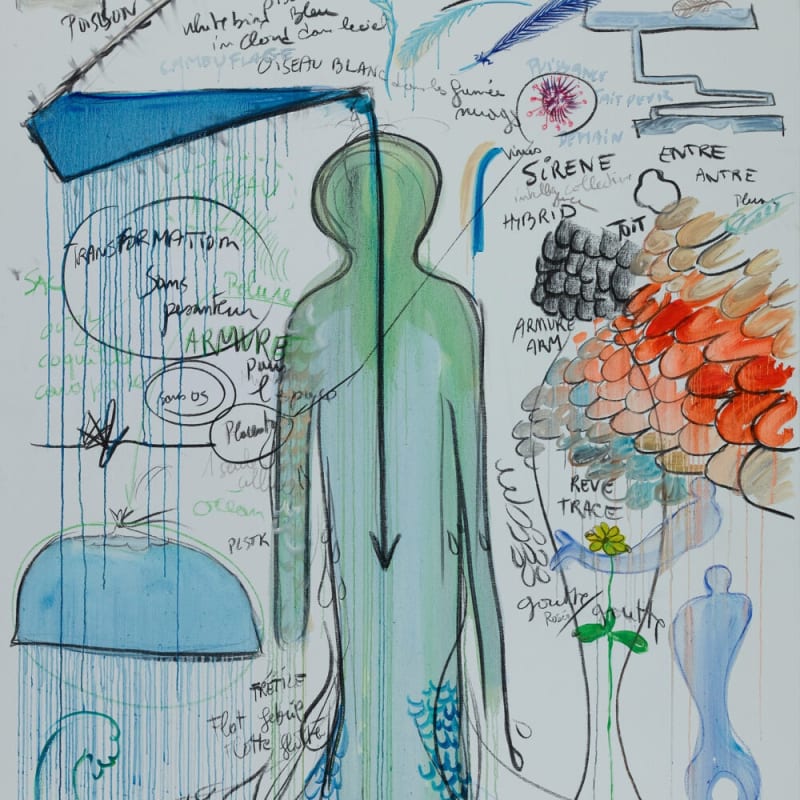Fondation Cartier pour l'art contemporain, Paris, France
https://www.fondationcartier.com/expositions/la-vallee
From December 8, 2022 to April 30, 2023, the Fondation Cartier pour l'art contemporain presents The Valley, a large monographic exhibition devoted to the painting of Fabrice Hyber.
In his tentatively painted canvases, the French artist reveals a free and lively consciousness. Bringing together some sixty works, including almost fifteen pieces produced specially for this exhibition, Hyber creates a school open to all hypotheses at the heart of the Fondation Cartier. Visitors are invited to explore the different "classrooms" according to a layout that follows the artist's meandering thoughts.
"I have always considered my canvases to be like classroom blackboards, like those where we learn to dissect knowledge through teachers and researchers. Mine offer other worlds, whether possible or impossible. In this exhibition, I chose to install my works instead of blackboards in this ideal school setting."
Fabrice Hyber
The Valley: sowing and creating
The multiple dimensions of Hyber's art find their origins in the forest he has been cultivating since the 1990s in the heart of the Vendean countryside, surrounding the former property of his parents, who were sheep farmers. Some 300,000 tree seeds, from several hundred different species, have been sown using a carefully perfected technique, and have gradually transformed what was once agricultural land into a forest of several dozen hectares. The landscape, in other words, has become a work of art. "With the Valley, I first wanted to restore a wooded landscape around my parents' farm so as to create a natural barrier with the surrounding industrial agricultural land. Whenever something is put into place, I look elsewhere to find alternative possibilities. This is systematic."
A place of learning, experimentation, and a refuge, the Valley has become the matrix and source
of inspiration for all the artist's work. Hyber willingly compares his practice to the organic growth of living beings: "Basically I do the same thing with artworks, I sow trees just as I sow signs and images. They are there, I sow seeds of thought that are visible, they develop, and grow. I am no longer in control."
Painting the ebb and flow of thought
Among the wide variety of Hyber's artistic practices, none evokes the action of sowing more than painting. A starting point for each of his projects, containing the seeds of future work, this medium occupies a fundamental place in the artist's practice. On large-format canvases set up in his studio, Hyber formulates hypotheses, juxtaposes ideas, invents forms, and plays with words: "Since I started painting, I use a lot of water and very little material. This yields some incredible effects, and very light canvases. My oil paintings are essentially watercolors. There is very little intervention in the end."
Going from one painting to another, the artist jots down a sentence here, draws an image there, glues an object elsewhere, according to his imagination and conjecture. Every step counts. This process of creation "by accumulation" enriches the work with all the potentialities generated by his evolving reflections. The canvas therefore, becomes a space for learning and teaching: "I learn by doing and I want to share this."
An exhibition-school
If Fabrice Hyber imagined this exhibition as a kind of school, it is precisely in an effort to share this other way of learning, born in particular in the Valley. The exhibition's scenography is reminiscent of classrooms as well as playgrounds. It encourages visitors to learn, move around, open doors, look over windows, step over shapes, play, but also sit on a bench or in front of a desk to look at the canvases that replace the traditional blackboard. Fabrice Hyber stages various ways of learning from a painting. In the short videos that accompany the works, the artist reveals the mental journey that presided over their creation. He invites visitors to rely on the resonances evoked by his canvases to formulate their own hypotheses and make their own associations: "What is important in a school, in my opinion, even more than learning things, is learning how to look at things, and observing how these evolve."
With this in mind, classes open to all visitors will be offered by guides specializing in subjects as diverse as measurements, the shape of fruit, the hybridization of bodies, the weather, sport, games, digestion, and even transformation.
In addition, an ambitious residency program of classes, co-organized with partner schools*, as well as "evening classes," are also accessible in the form of podcasts. Taught in pairs by experts in their own fields, these classes are an opportunity to test the hypotheses proposed by the artist in his works. By bringing together a chef and a gardener, an athlete and a philosopher, a climatologist and a writer, a choreographer and a sexologist, as well as a landscape architect and an art historian, The Valley brings together various forms of knowledge, reflecting the range of Hyber's artistic practice.










